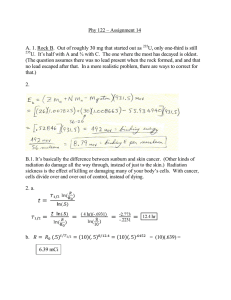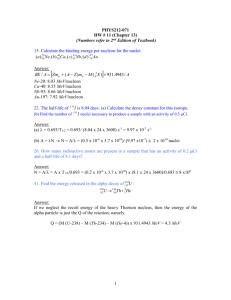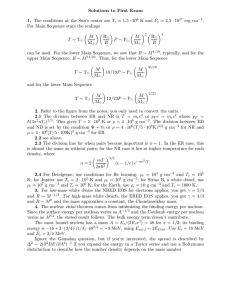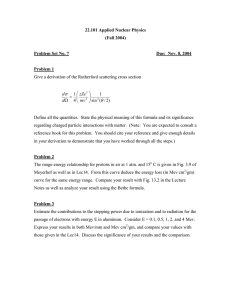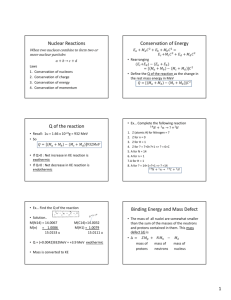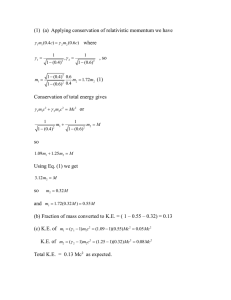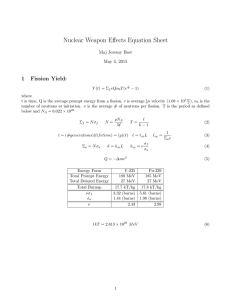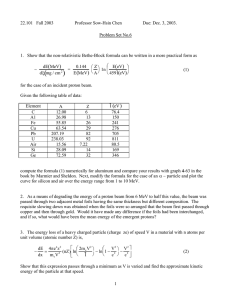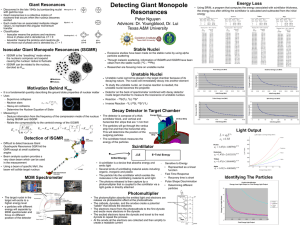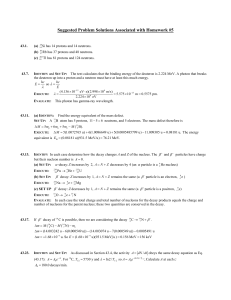Phy 133 – Assignment 13
advertisement
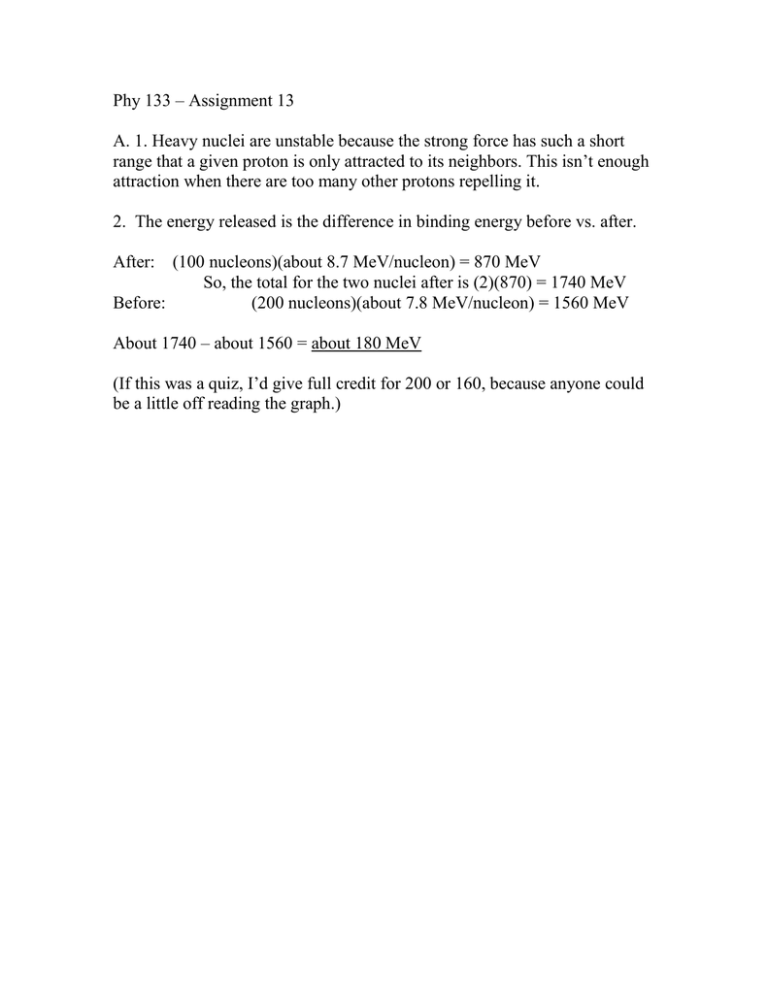
Phy 133 – Assignment 13 A. 1. Heavy nuclei are unstable because the strong force has such a short range that a given proton is only attracted to its neighbors. This isn’t enough attraction when there are too many other protons repelling it. 2. The energy released is the difference in binding energy before vs. after. After: (100 nucleons)(about 8.7 MeV/nucleon) = 870 MeV So, the total for the two nuclei after is (2)(870) = 1740 MeV Before: (200 nucleons)(about 7.8 MeV/nucleon) = 1560 MeV About 1740 – about 1560 = about 180 MeV (If this was a quiz, I’d give full credit for 200 or 160, because anyone could be a little off reading the graph.) B. C. 1. An α ray is a 4He nucleus. A β ray is an electron. A γ ray is a (highenergy) photon. OR, you could say α rays are the least penetrating when they pass through matter, β rays are intermediate and γ rays are the most penetrating. There are other miscellaneous answers I would accept also. 2. If the disintegration energy is positive, the reaction can take place spontaneously. If Q is negative, energy would have to be put in for the reaction to happen. Q = (total mbefore – total mafter)c2. Only those reactions where mbefore is larger than mafter can happen without outside help. D. E.1. No. Decay is exponential, not linear. During the second year, half of what you had at the beginning of that year decays, so you end up with one quarter of the original amount. 2. Neutrons. 3. F. 1. If the biological damage is the same, that means the same number of REMs: 2. (10 rad/s)(300 s) = 3000 rad From formula sheet, 1 rad = .01 J/kg, so 3000 rad = 30 J/kg Since there is .100 kg, it will have absorbed 3.0 J Q = m c ΔT 3 J = (.1 kg)(4186 J/kg·°C) ΔT ΔT = 3 / 418.6 = .00717°C (Next time, try the microwave in the lounge.)
